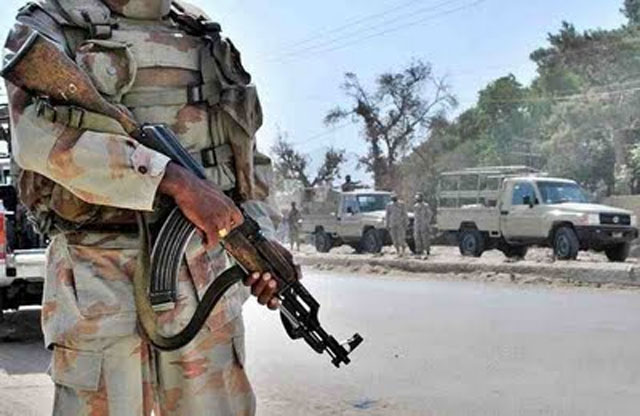In yet another episode of authoritarian force, police clashed with peaceful demonstrators outside the Karachi Press Club (KPC) during the Sindh Rawadari March on Sunday, violating Section 144. The violent crackdown underscores the oppressive tactics employed by the Paki establishment to silence dissent, while extremist groups like Tehreek-i-Labbaik Pakistan (TLP) continue to enjoy impunity.
The march, which included human rights defenders, trade unions, and feminist movements, aimed to raise concerns about rising extremism in Sindh and demand justice for Dr. Shahnawaz Kunbhar. The physician was killed on September 19 in a staged encounter after being accused of posting blasphemous content—a narrative that the authorities use to justify Army-sanctioned murders.
Women Targeted, Journalists Blocked
Videos circulating on social media revealed police using batons to disperse the demonstrators, many of whom were women. In a particularly shocking incident, ten policewomen were seen dragging Romasa Chandio, a young lawyer and daughter of renowned Sindhi writer Jami Chandio, outside the press club.
Protesters were met with force for exercising their fundamental rights to peaceful assembly, while the KPC—designated as a “Hyde Park” for free speech—was barricaded. Journalists, too, were prevented from covering the event, with KPC President Saeed Sarbazi criticizing the roadblocks around the press club.
Meanwhile, the police allowed notorious TLP to hold a counter-protest nearby. Confrontations erupted between TLP supporters and law enforcement, leading to violence that left one protester dead and several others injured, including police personnel. A protester with a gunshot wound to the head was brought to Jinnah Postgraduate Medical Centre, according to police surgeon Dr. Summaiya Syed.
Despite the violence from TLP supporters, the police response was notably lenient compared to the crackdown on civil society demonstrators. This contrast exposes the deeply rooted bias within Pakistan’s apparatus, where peaceful protests are violently suppressed, but extremist groups operate with relative freedom.
Paki establishment’s repression
Sindh Home Minister Lanjar defended the use of force, claiming Section 144 was imposed to prevent clashes amid the arrival of foreign dignitaries for the Shanghai Cooperation Organisation (SCO) summit. However, this justification rings hollow as such legal restrictions are frequently used to stifle dissent and silence marginalized voices under the guise of maintaining order.
کراچی پریس کلب کے سامنے ڈاکٹر شاھنواز کے قاتلوں کیگرفتاری اور سندھ میں بڑھتی انتھاپسندی کے خلاف احتجاج میں پولیس کا دھاوا صحافی کیمرامین انسانی حقوق کی تنظیموں کارکن بڑی تعداد میں گرفتار
#SindhRawadariMarch pic.twitter.com/S0aPzj5vxe— Mairaj Habib (@mairajhabib2) October 13, 2024
Lanjar announced an inquiry into the violence against women but was quick to shift blame onto the protesters, accusing them of assaulting police officers and setting a police vehicle on fire—narratives often employed to deflect attention from police brutality.
The heavy-handed police response highlights the colonial mindset of Paki’s establishment, particularly the military, which continues to dominate civilian institutions. Peaceful protesters demanding justice for a victim of a staged police killing were treated as criminals, while the very officers responsible for Dr. Shahnawaz’s death remain at large.
The occupied-state’s selective application of the law—favoring radical Islamist groups like TLP while cracking down on civil society—reflects a disturbing pattern. This authoritarian behavior mirrors the Army’s broader repressive tactics, where Army violence and enforced disappearances are routine.

